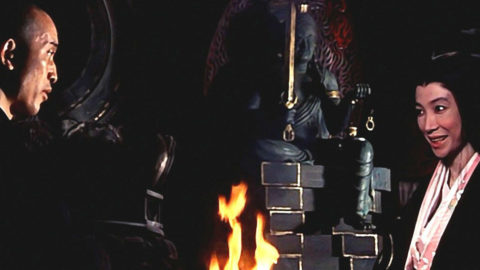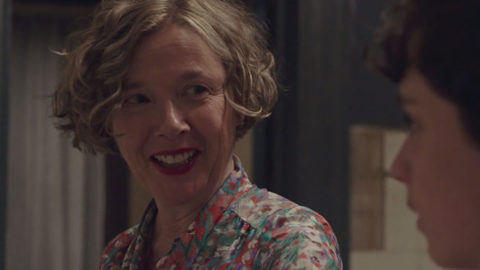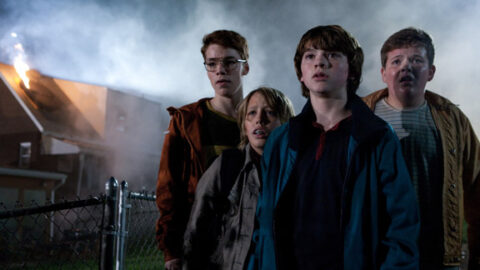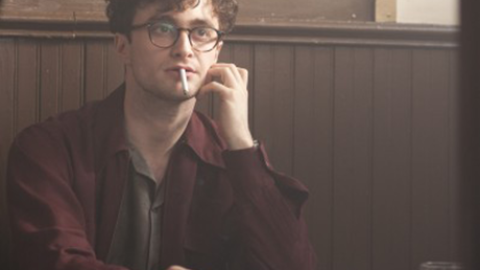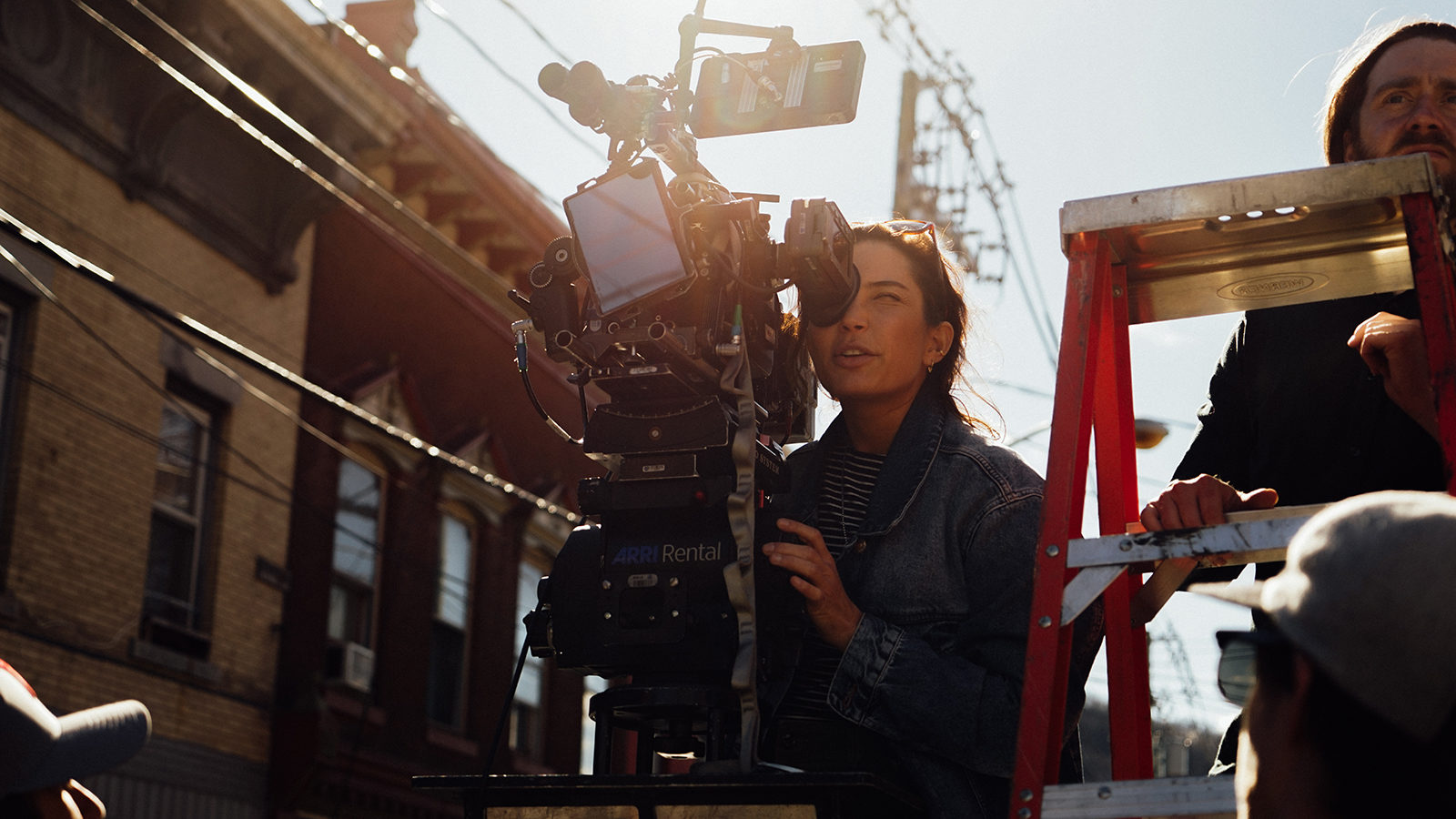
Art and Craft: First-Person Shooter
Reed Morano made her mark as a feature cinematographer with Frozen River (2008). She followed with Kill Your Darlings and The Inevitable Defeat of Mister and Pete, both released in 2013, the same year that she was invited into The American Society of Cinematographers. In 2015, she directed and photographed the feature Meadowland. Her second feature as a director, I Think We’re Alone Now opened last Friday, and she’s currently in postproduction for The Rhythm Section, her first big-budget studio movie, an action thriller starring Blake Lively and Jude Law.
[Note: the following is an extended version of the Art & Craft interview published in our September/October 2018 issue.]
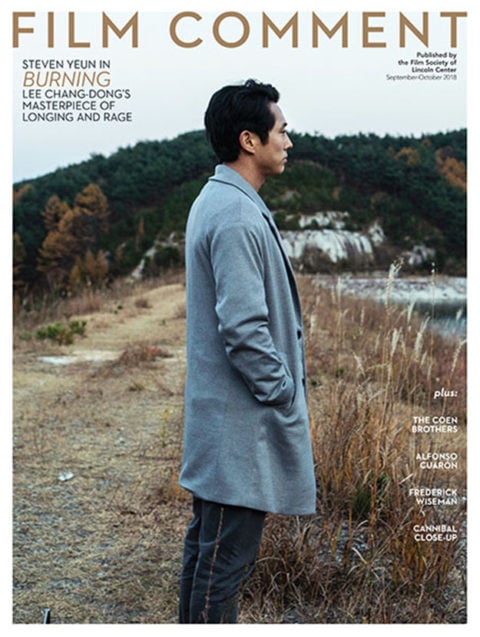
You graduated from NYU film school in 2000, and you were a cinematographer for 15 years before you directed Meadowland. Did you always want to direct?
When I started NYU film school, I assumed that I would direct because I was into writing and photography. But the first time I worked on a film, I kept watching the DP, and thinking that looks like the coolest job. There were no monitors then, it was just him shooting film and taking light readings. He seemed to know all the secrets, and that looked like so much fun. And I think I knew subconsciously that I wasn’t ready to direct. I didn’t have the life experience yet that compelled me to tell my own stories. Instead, I took on a very technical job. And then, as I went out into the real world, and eventually started DPing indie features, I’d sometimes think if that was me, I wouldn’t do it that way. And I started have strong feelings about performances. I really wanted the movie to be as good as possible, but the DP is never going to be the answer to making a movie good. But right up to doing Meadowland, I still didn’t feel confident enough to direct. I thought maybe I should just keep my day job.
How did Meadowland happen?
Matt Tauber, the producer on a feature I was DPing, thought I could direct, and he sent me scripts. One was Meadowland. The story scared the shit out of me. And Chris Rossi, the writer, has a real knack for finding interesting moments that you haven’t seen yet in a movie. The scene that got to me is where Olivia Wilde’s character suddenly wakes up in the middle of the night with a memory of something and she runs to the car and finds one of the cookies that her son had been eating the day he went missing. I just read that and was like… yeah.
Meadowland, I Think We’re Alone Now, and The Handmaid’s Tale, for which you directed the pilot and the first two episodes, all speak to grief and loss.
There’s a line producer I’ve worked with a lot. He couldn’t come aboard Meadowland because it was so dark. He said, “You’re the funniest person I know. Why do you want to do this?” The challenge was to do a movie about grief, about a couple whose child goes missing, and show it not with people yelling and fighting and crying. It’s not about those histrionics, it’s about a person mentally unraveling, inside. How do you do that cinematically?
So how did you find the script for I Think We’re Alone Now?
I was always obsessed with Eternal Sunshine of the Spotless Mind. I love Michel Gondry and Ellen Kuras [the film’s cinematographer]. It’s a weird love story but it’s also very sad and it has that sci-fi element. I think I was looking for something that lived in a weird world but also was grounded. But mostly I was just looking for something unique. My agents had gotten the script for I Think We’re Alone Now from the producers. And the writer, Mike Makowsky, loved Meadowland. And he’s a very funny guy. But, like some of funniest people, he’s very open to pain and grief. I guess he thought the combo of my sensibilities with his script could yield something very interesting or powerful or whatever he was looking for. I hope he got it. My agents didn’t really want me to do this film. I was already involved in Handmaid’s Tale, and they didn’t want me to go back to something indie again. But they knew if I read the script, I’d fall in love with it, and I did. I just thought that Mike had such an original voice and such a great of way of having symbolism and profound thoughts buried in very simple storytelling. And there’s a twist in the movie that is a complete surprise. I love that twist. In almost every script I read, and in almost every movie I see, I predict what’s gonna happen. I was just so happy to read a script where I didn’t do that. And the twist happens at a weird time and it breaks the three-act structure. I just loved everything about it.
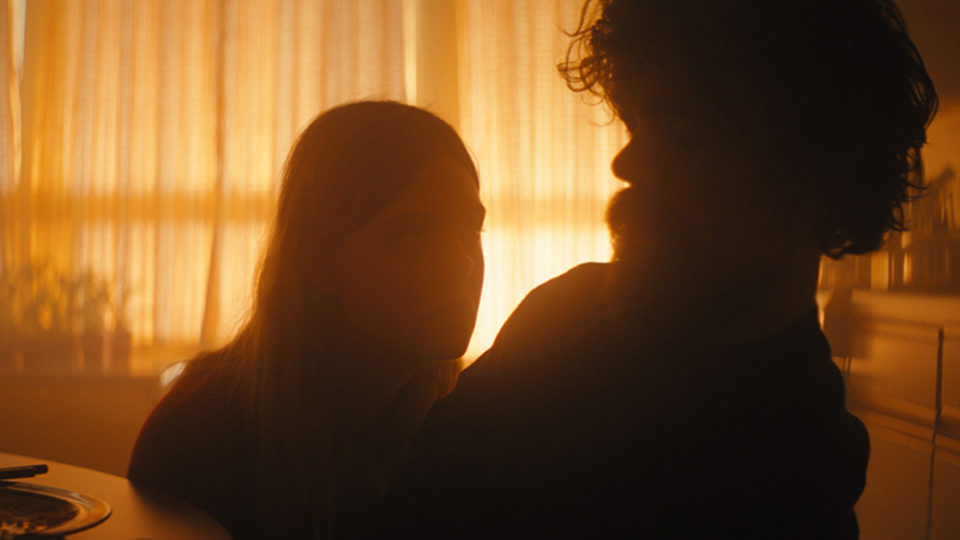
I Think We're Alone Now
What I love about the movie is that the camera tells the story. In the first section of the movie, when he’s alone, it almost never stops moving. How did you make that choice?
I think some of these things are subconscious and some of them are purposeful. Of course I thought about the challenge at the beginning of the movie that he’s by himself. There’s no one talking, there’s no voiceover, thankfully, because I don’t like voiceover, unless it adds humor. I knew it was going to be a tricky sequence to cut together so I just wanted to get as much information about his life and his OCD routine. I thought that if I could show him doing things very methodically and rhythmically moving from one moment to another without thinking about what he’s going to do next, I could show the audience that he’s on a mission. He’s more or less content, he’s not actually searching for anyone, he’s just organizing his space and cleaning up the town. There are some static shots but you need movement to show the momentum of his life. But I also wanted it to feel emotional, so that’s why there was the handheld camera and also the Steadicam. And then it kind of comes to a grinding halt, when she [the Elle Fanning character] shows up. She’s basically the stick in the spoke of his wheel, she gets in the way of this routine.
I know that part of the Hudson Valley. And so for me it was super real, but also beyond conventional movie realism because the camera was so observational. There are almost no classically subjective camera positions in the movie.
I kind of think that the camera sees Del [Peter Dinklage] the way he sees himself, and the way the people in his life who are very close to him see him. And I think that puts the audience in his shoes more. I don’t tend to like movies where you’re kept back, and you feel like you’re only an observer. I’d rather it be not like a play. I admire movies like that, but for me, I want to be in the perspective of the characters as much as possible.
For me, what was so interesting has something to do with the camera movement combined with the sound. The camera was like some kind of outer world presence and it was recording all this for some other purpose. It’s kind of the way Del inventories the photographs left by the people who died. The camera is making an inventory of what the last survivor of the town is doing. But part of what makes the early part of the movie so anxiety-provoking is that the camera seems to be moving with real intent toward something unknown and the music has that same feel.
My composer, Adam Taylor, also did Meadowland with me. Because I loved his music, I also got him onto Handmaid’s Tale, which was hard because they were, I think, looking for a more known TV quantity. Adam just has his own thing going. If you listen to the two songs in August: Osage County, which first drew my attention to him, and then what happens in Meadowland, and then what happens in Handmaid’s Tale and then in this movie, we’ve gone in a direction together, I think, and creatively pushed into another place. So I kind of regret giving him to Handmaid’s Tale because now when people hear the music we’re making here, they’re like, “Oh! It’s so Handmaid’s Tale!” and we’re like “No! It’s actually not!” It’s Adam Taylor and it’s Meadowland and now it’s this movie. The score is so pivotal in I Think We’re Alone Now. In my director’s cut, the score is even more pivotal. He took everything up 10 levels.
What made you cast Peter Dinklage as a misanthropic librarian who believes he’s the last person left alive after a mysterious apocalypse?
Technically, Peter cast me because he was already on the movie, and he was one of the producers. I’ve loved Peter Dinklage since The Station Agent. He doesn’t often get cast as a leading man, but he is one. He can do so much with his face without saying a word. And he does some of the things that I love most in the movie. You can’t think of those things, they just come out of a person in the moment, and for me it’s a golden opportunity too.
Visually you have this vast empty space, both interior and exterior, and he’s a small guy. The movie would not have been nearly as powerful with a six-foot actor.
I wanted it to be mostly at his eye level, and in fact tend to go to that height anyway for most of my wide shots because it’s a more interesting way to see the world. I knew I was going to follow him, wherever he was, handheld or with a Steadicam. I was looking for an old wooden library. And strategically I picked that library because I needed not just walls and shelves, but big windows. I googled library, big windows, and a photo of the library we used popped up. The Hudson River outside the window is like a huge backdrop. It’s overwhelming—he’s the last person in the world and the world is so big and the river is so desolate. I knew there was going to be a lot of symmetry and I knew that there was going to be a lot of one-point perspectives that would end on him. Also I wanted to light a lot of the movie in a way that used only the tools he would have if there was no electricity. That pushed me toward shooting most of the night scenes at dusk. We didn’t have the budget to light the Hudson anyway. But you need to see something else out of those windows or else you’re going to see the reflections of the crew.
And I didn’t know if we’d have more than two days in there. I said to my AD, “We’re going to have our Revenant now!” And he said that The Revenant had four months to shoot—we have 24 days total. So it was all centered around this idea of big windows and it all stemmed from Pete being a person alone in this vast emptiness. And I chose lenses to sort of get into his head more, anamorphics that with shallow depth of field would really distort the backgrounds, so that it felt almost surreal, and put the eye on just that one person in the frame.
So, in relation to being your own DP, do you work faster or slower because you are?
Much faster. Faster because I don’t have to try to convey anything to someone else, I just do it. It’s more instantaneous, and I mean, I’m sure on some level I’m losing time in other ways but I’m making up time because when it comes down to it, if I’m in the middle of a lighting setup and it’s me and I’m in control of it, then I just shut it down. I mean, I know how to wrap things up and just get going.
Did you also operate?
Yes, except for the Steadicam. And we did shoot some scenes with two cameras. Whenever there was magic hour in the library, we had to shoot two cameras because I had to utilize real magic hour. I like operating because when I’m operating and directing I’m not really thinking about the technical part. I’m just watching the performance in the way that I’m most familiar with and I can also get different things out of the performance by being the person that’s right there and also by deciding what I want the audience to see because the camera doesn’t have to just stay in one place. I think a lot of times DPs operating for others don’t feel like they have the right to just move when they feel compelled to move.
I haven’t found anybody who can really do all that for me. It’s not about being a good operator, it’s more about being intuitive about the story that I have in my head. So it’s easier for me when it’s just me. But that being said, I had a DP, Colin Watkinson, on Handmaid’s Tale, who’s incredible and one of my best friends, and it was so fun collaborating with him. And then I just finished this movie called The Rhythm Section and Sean Bobbitt was my DP, and he’s also one of my idols, and we had an incredible experience together.
And what is this movie you just shot?
It’s actually a big studio movie for Paramount and the producers of the Bond films, Barbara Broccoli and Michael G. Wilson. It’s their first movie outside of Bond, I think. It’s about a woman who goes from rock bottom to reclaiming her life by seeking revenge on people that killed her family. In the process, she is a person who is pretending to be an assassin. She ends up taking on another identity, and I thought what was interesting about that is that you can’t turn a normal human being into a coldblooded killer. Blake Lively plays that character and Jude Law and Sterling K. Brown are also in it. It’s an action film, but it’s also psychological so the camera in that is super important. It is really a POV movie, and it’s totally in her POV. So it’s kind of cool.
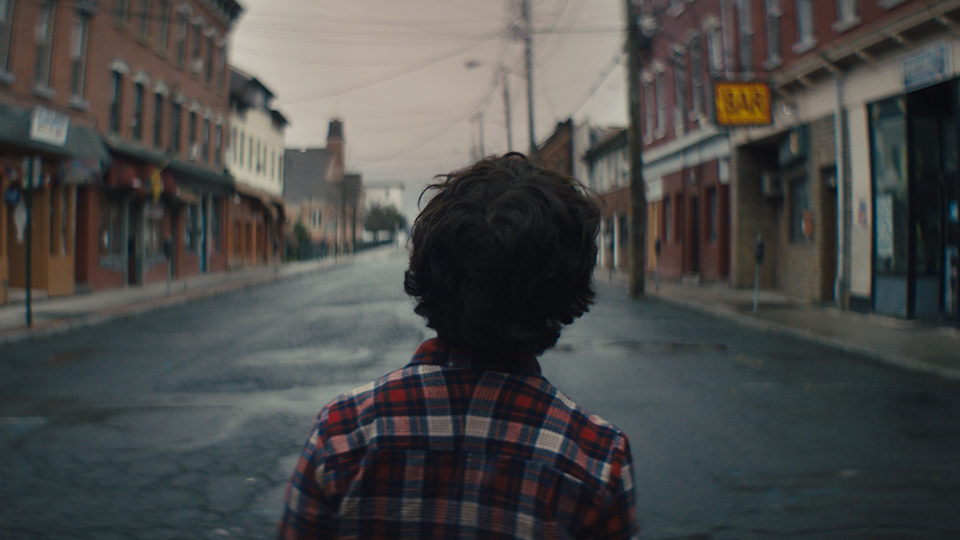
I Think We're Alone Now
Did you like working at that size budget?
You know, I did. I really loved that crew and I loved that experience. In the beginning there were moments where I was like, “I just wanna go back to I Think We’re Alone Now and have five people in my crew and no money and be so annoyed because we can’t do anything because we have no money.” But somehow everybody gets it done and it’s super intimate, just like our little family. With Rhythm Section, there were 400 people on the crew. But they also became a family, which is pretty incredible for such a large group of people.
How long was the shoot?
Well, it was a 60-day shoot. And our schedule on I Think We’re Alone Now was 24 days. So it’s a very vast difference in the type of moviemaking, you know. But it bonded us together. It bonded me with Blake and the producers and the department heads. We had a long hiatus because Blake hurt her hand during filming right before we went on Christmas vacation, and she had to heal, because the biggest stunts were yet to come. When we came back, it was almost like we were on Part Two. Like a different movie, our second version of that franchise. It was 10,000 times better because everyone was a known quantity and it was great.
I guess we should talk a little bit about Handmaid’s Tale, which you didn’t shoot by choice, but for which you set the template by doing the pilot.
I think the look was very particular on Handmaid’s and it was sort of dictated from the beginning from my lookbook. Because I knew the questions that were going to be asked of me when I was interviewing for that job were, “How are the flashbacks going to be different from present-day, etc., etc.?” So I went into it very visually detailed, with something like an essay on what I was going to do. When I hired Colin, he had read the lookbook and knew what the mantra was. He was the perfect person for it because he had a glossy, very grand look, and I have more of a gritty aesthetic. I thought the combo would be perfect for the show. I also do this thing in prep when I’m scouting locations. I take a lot of photographs at the locations that are more than location photos. I take photos of shots I would actually do in the show. I usually make my assistant or the AD stand-in for the main character, and I take tons of photos of that person, not to show location, but more to show the sort of feeling. And then I give those to all the department heads and say, “This is the vibe.” I color-correct the photos too.
And do you do this for everything or just for this series?
No, I’ve done it for everything. I have those photos for everything I’ve directed.
One of the funny things about I Think We’re Alone Now is that you never use the song.
What I liked about Mike’s script was that he named it for the song, but he never said, “Oh, we have to put it in.” So, yeah, a person could have put the song in, but I felt like people are gonna be like, “Oh man! They put the song in!” But actually what ended up happening was the opposite. People were angry because there was no song. And I’m like, “How could people be mad about that?” So I want people to know in advance that if they’re coming to this movie for the Tiffany song, they’ll be disappointed.
Amy Taubin is a contributing editor to Film Comment and Artforum.



